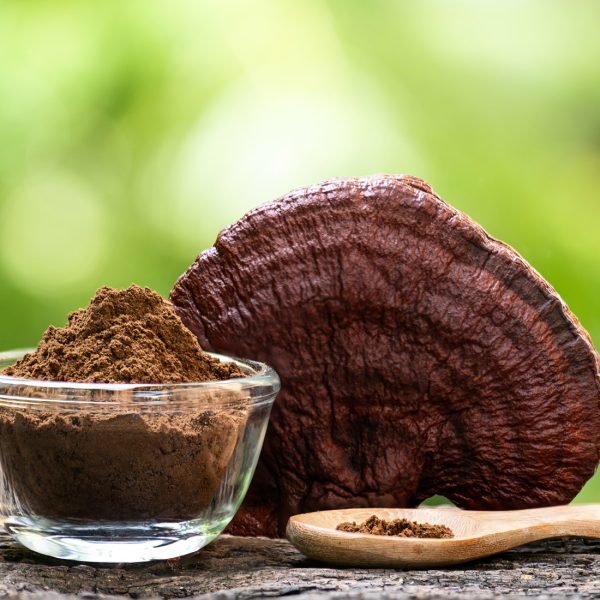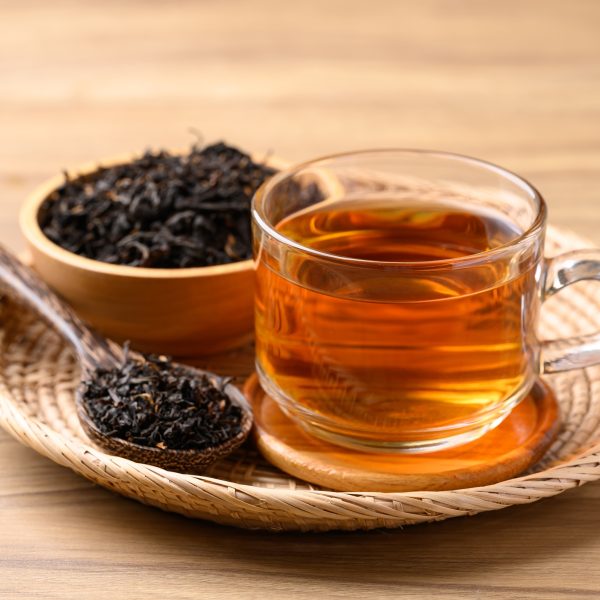Bad respiratory health can lead to chronic inflammation and a gradual weakening of the immune system. Here we delve deeper into the causative factors of respiratory conditions and how herbs can help.
Understanding respiratory health

Respiratory conditions lead to chronic inflammation and a gradual weakening of the immune system. Here we delve deeper into the causative factors of both conditions and how herbs can help.
Asthma is a chronic inflammation of the bronchial tubes (airways) that causes swelling and narrowing (constriction) of the airways. Asthma affects approximately 5 million people in the UK. It can arise at any age, but approximately 50% of asthmatics will start to develop symptoms before the age of 10. 1 in every 11 children will develop asthma and it is classed as the most common chronic condition in the UK (asthma.org.uk).
Pharmaceutical treatments of asthma
Bronchodilators
Bronchodilators activate the sympathetic nervous system and encourage the release of adrenaline. However, these may also overstimulate the heart causing palpitations and tremors, and should be used with caution in heart conditions, hyperthyroid, high blood pressure and extreme anxiety. They are commonly prescribed as inhaled medicines, the most common being Salbutemol or Ventolin.
Corticosteroids
Corticosteroids reduce inflammation in the bronchial tubes by inhibiting the inflammatory cascade. However, they also depress the immune system, reduce white blood cells, increase susceptibility to infection, osteoporosis, reduced efficacy of insulin, peptic ulcers, increase in blood pressure, fluid retention, acne and depress the body’s ability to produce corticosteroid hormones.
Antihistamines
Antihistamines prevent histamine from attaching to receptor sites within the body, theoretically preventing the histaminic response and the body from responding to allergens. They are used to relieve mild to moderate symptoms but can cause drowsiness.
Decongestants
Decongestants work by constricting blood vessels within the mucous membranes of the nasal passages, thereby helping to prevent fluid leakage and a ‘runny nose’. However, decongestants should not be used for more than several days, because they can cause a “rebound” effect and make the congestion worse. For example, the stagnation causes a ‘dam’ like effect which, in turn, causes a flood.
Bronchitis
Bronchitis is the inflammation of the bronchi, the air passages that extend from the bronchial tubes and directly into the lungs. An acute Upper Respiratory Infection (URI) is the most common cause of acute bronchitis. The pathology of bronchitis causes the mucosa of the affected bronchi to become inflamed, followed by a dry, nonproductive cough. This is then followed by the production of thick and sticky mucous. Shortness of breath can then result and there may be occasional crackling and wheezing after coughing. Most importantly the excessive mucus floods the ‘muco-ciliary escalator’ (see above) and drastically increases congestion and the risks of secondary infections.
Types of bronchitis
Acute bronchitis
Acute bronchitis will normally only last for between 7-14 days. Symptoms peak within three to five days after the first symptoms appear, and then often resolve within 10-14 days. Serious complications usually occur only in patients with constitutional lung weakness and an underlying chronic respiratory disorder.
Chronic bronchitis
Chronic bronchitis is a chronic pulmonary obstructive disorder (CPOD) and is characterised by a chronic productive cough. Chronic bronchitis can result from repeated attacks of acute bronchitis, or it may evolve gradually due to heavy smoking or inhalation of air-borne pollutants. It may have a repetitive pattern and gradually worsen with each occurrence. It is a very common disease in the UK with the large majority of cases being associated with smoking. A damp climate, poor housing and environmental pollution are also other important factors.
In chronic bronchitis there is both hyperplasia and hypertrophy of the mucus-secreting cells. This means that there is excess mucus production and a thickening of the bronchial walls. It is directly implicated with the formation of emphysema.
Smoking is the main cause of chronic bronchitis because it inhibits the efficient functioning of the mucociliary escalator.
Pharmaceutical treatment of bronchitis
- Anti-pyretic, analgesic medication: This form of medication is often used to reduce fevers in acute bronchitis with the most common being aspirin and paracetamol. However, aspirin has been implicated with intestinal bleeding and blood thinning and paracetamol is toxic with alcohol and can irritate and already damaged liver.
- Antibiotics: Antibiotics are the primary method of treatment for acute bronchitis and often include common medications such as penicillin and erythromycin. Antibiotics can disturb the intestinal flora leading to outbreaks of Candida albicans and other yeast infections.
- Anti-tussives: This form of medication will inhibit or suppress the cough reflex by depressing the medullary cough center. The most well-known medication from this category is codeine.
- Expectorants: Expectorants help to expel mucus from the lungs by reducing its thickness.
Other treatments involve anti-allergenic, bronchodilators, corticosteroids, oxygen therapy and removal of the causative factors
How does respiratory health work?
The airways
The inner lining of the airways, or ‘bronchial tubes’ is known as the bronchial mucosa. This includes:

- Mucous glands that should produce just enough mucus to lubricate the airways, and to act as a sticky surface to trap airborne particles
- Cells with ‘cilia’ or hairs that engage in coordinated whip-like activity to move the mucus film up the airways towards the throat where it appears as phlegm to be swallowed and safely disposed of by your stomach juices. This mechanism is known as the mucociliary escalator and is the primary lung defence. As you breathe in the air is sent in a spiral down the airways, fine particles are spun out to the mucous surface and the escalator gets them all out!
- Inflammatory cells, such as eosinophils, lymphocytes, and mast cells. These cells are designed to protect the bronchial mucosa from any inhaled microorganisms, pollutants and irritants which can cause the bronchial tissue to swell. However they are also important players in any allergic reaction. Therefore, the presence of these cells in the bronchial tubes causes them to be a prime target for allergic inflammation and are often affected in any inflammatory response.
How asthma affects breathing
Asthma causes a narrowing of the airways, which interferes with the normal movement of air in and out of the lungs. Asthma involves only the bronchial tubes and does not affect the air sacs or the lung tissue. The narrowing that occurs in asthma is caused by three major factors:
- Inflammation
- Bronchospasm
- Hyper-reactivity
Inflammation in the airways
The first and most important factor causing narrowing of the bronchial tubes is inflammation. Inflammation occurs in response to an allergen or irritant and results from the action of chemical mediators such as histamine, leukotrienes, and others. The bronchial tubes become red, irritated, and swollen and the inflamed tissues produce an excessive amount of “sticky” mucus into the tubes. The mucus can clump together, forming “plugs” that can clog smaller airways. Eosinophils and other cells, which accumulate at the site influence tissue damage and are often shed into the airways, thereby contributing to the narrowing.
Bronchospasm
During an asthma attack, the muscles around the bronchial tubes tighten, in response to chemical mediators such as histamine and leukotrienes. This is referred to as bronchospasm.
Hyper-reactivity (hypersensitivity)
In patients with asthma, the chronically inflamed and constricted airways become highly sensitive, or reactive, to triggers such as allergens, irritants, and infections. Exposure to these triggers may result in chronic inflammation and permanent narrowing of the airways.
The combination of these three factors results in difficulty with breathing out. As a result, the air needs to be forcefully exhaled to overcome the narrowing, thereby causing the typical “wheezing” sound. People with asthma also frequently “cough” in an attempt to expel the thick mucus plugs. Reducing the flow of air may result in less oxygen passing into the blood stream and if very severe, carbon dioxide may accumulate in the blood.
Understanding the root
Causative factors of asthma: Common allergens
- “Seasonal” pollens
- Year-round dust mites, moulds, pets, and insect parts
- Foods, such as fish, egg, peanuts, nuts, cow’s milk, and soy
- Additives, such as sulfites
- Work-related agents, such as latex
Causative factors of asthma: Common irritants
- Respiratory infections, such as those caused by viral “colds,” bronchitis, and sinusitis
- Drugs, such as aspirin, other NSAIDs (non-steroidal anti-inflammatory drugs) and Beta Blockers (used to treat blood pressure and other heart conditions)
- Tobacco smoke
- Smog, weather changes, diesel fumes
- Paint, detergents, deodorants, chemicals, perfumes
- GERD (gastro-esophageal reflux disorder)
- Exercise, especially in cold dry conditions
- Work-related factors, such as chemicals, dusts, gases, and metals
- Emotional factors, such as laughing, crying, distress
- Hormonal factors, such as premenstrual syndrome
Causative factors of bronchitis
The primary causative factor of bronchitis is viral infection. The most common viruses are adenovirus, coronavirus, influenza A and B viruses, parainfluenza virus, respiratory syncytial virus, coxsackievirus, rhinovirus, and the viruses that cause rubella and measles.
Signs and symptoms
The 4 major symptoms of asthma
- Shortness of breath especially with exertion or at night
- Wheezing a whistling or hissing sound when breathing out
- Coughing may be chronic; usually worse at night and early morning, during exercise or when exposed to cold, dry air
- Chest tightness may occur with or without the above symptoms
Symptoms of bronchitis
- Fever
- Cough
- Shortness of breath
- Difficulty exhaling
- Wheezing
- Catarrh
- Mucopurulent expectoration
- Lymphadenopathy
- Myalgia
- Headache
Herbal solutions
Trikatu
Trikatu is a lung tonic and rejuvenative. It is indicated whenever there is coughing, wheezing and breathing difficulties with clear, sticky and white phlegm. It is used in asthma, bronchitis, pneumonia, cough and colds. Trikatu is a superb remedy for drying the copious nasal secretions and possesses anti-allergenic effects due to its histamine reducing response. It is effective for sinus congestion and chronic nasal blockage. Trikatu has an affinity for all the orifices of the head, clearing that muzzy-headed feeling.

Long pepper
Long pepper is primarily used for cold, wet and ‘mucus’ conditions of the lungs. It is a rejuvenative for the respiratory organs, encouraging vasodilation and therefore increasing blood circulation in the lungs.
Elder
Elder flowers and berries are effective expectorants for the respiratory system, helping to shift stubborn catarrh and mucus in both acute and chronic afflictions of the respiratory system. Elderflowers have a diaphoretic action which encourages perspiration and can be of particular use in relieving the heat and congestion associated with chronic and acute afflictions of the respiratory tract.
Echinacea
Echinacea has immune stimulating properties that are focussed within the upper respiratory tract, proving particularly effective in acute and chronic infections of the lungs and throat. It is indicated in any acute and chronic mucous congestion affecting the respiratory tract.
Andrographis
The bitter, light, dry and penetrating properties of andrographis help to cut through thick phlegm in the respiratory tract. It’s potent immune stimulating activity and anti-infective properties also make it an ideal herb for those who are at a higher level of risk from respiratory based infections, such as those with asthma and bronchitis.































